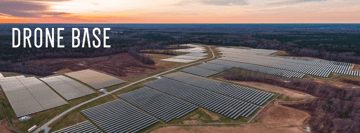After a year of consolidation, a few expensive failures and steady growth overall, the US drone industry is in an interesting place.
The United States has long been home to the world’s largest drone market, with leading service providers, innovative software companies and more investment in drone technology than any other country.
And now, with the industry and the FAA working towards greater regulatory clarity and the eventual implementation of an unmanned traffic management (UTM) system, the future looks promising.
In the five-year UAS forecast published earlier this year, the FAA estimated that the country’s commercial drone fleet is set to triple from 277,386 in 2018 to 835,211 in 2023.
There are certainly a few reasons to be skeptical of those figures, but there’s no denying the upward curve and what it means for organizations and drone pilots.
The FAA also suggested that a high proportion of current drone missions are flown for the purpose of R&D, education or training. These numbers are likely to shift into operations as proof of concepts are confirmed and organizations using drones grow more comfortable with the technology.
Making a difference today
The increasing number of commercial operations has plenty to do with the FAA’s Part 107 ruling and the ease with which businesses can now put drones to work.
But it’s also down to advances in drone technology in terms of both hardware and software.
Drones and their payloads are more capable than they were a few years ago. They are safer, too. As a result of these forward steps, construction sites, real estate companies, farms, utility companies, and more are reaping the rewards of aerial photography and data on demand.
One of the most exciting areas of progress has been the work of first responders. Law enforcement agencies and emergency teams are putting drones to work in all sorts of scenarios: improving situational awareness, guiding search and rescue missions, and generally contributing to operations that save lives every day.
On top of that, recent developments and technologies on the horizon look set to take many applications to the next level.
Our partner and investor FLIR continues to bring the benefits of thermal imagery to the skies with ambitious partnerships and investments. Skydio has just launched a follow-up to the R1 drone that looks set to make a huge impact on the market. Google’s Wing delivery drone service has just taken off in Virginia. It’s an exciting time.
Threats to progress
But it’s not all good news. Although the drone industry has created thousands of skilled jobs that span pilots, engineers, service providers, data analysts, software developers and everything in between, political pressures are growing.
That’s because the vast majority of drones in use today are made in China. And most of those are made by another partner and investor of ours: DJI. As a result, the US drone industry is heavily reliant upon Chinese manufacturers and the supply chain of distributors and retailers that connect the two.
Needless to say, the current administration’s trade war with China comes at a bad time for businesses using drone technology in the United States. The impasse is pushing prices up for companies and public safety organizations seeking to innovate, develop new applications, and ultimately work smarter.
A number of critical emergency services now depend on drones, not to mention the countless organizations that rely on the latest Chinese hardware to support their operations.
High tariffs on drone imports, wherever they are coming from, will inevitably reduce the adoption rates and readiness of first responders. They also serve to hit the bottom lines of all kinds of companies and, by extension, the pockets of the American people.
On the horizon
There are positive regulatory changes on the horizon. Increasingly, the FAA has been granting exemptions to organizations keen to fly at night, beyond line of sight, or other types of advanced operation.
There are also expected to be significant updates to Part 107 flights in the near future.
These steps are all part of a bigger picture, in which the FAA is working on a number of separate but connected initiatives in an effort to establish an unmanned traffic management system.
As the trade situation continues to threaten to raise costs for drone businesses and commercial drone pilots, it’s our hope that we continue on the path to enabling a fast-growing drone industry with a level playing field for a broad ecosystem of hardware, software, and service providers in the United States.


.jpg)


